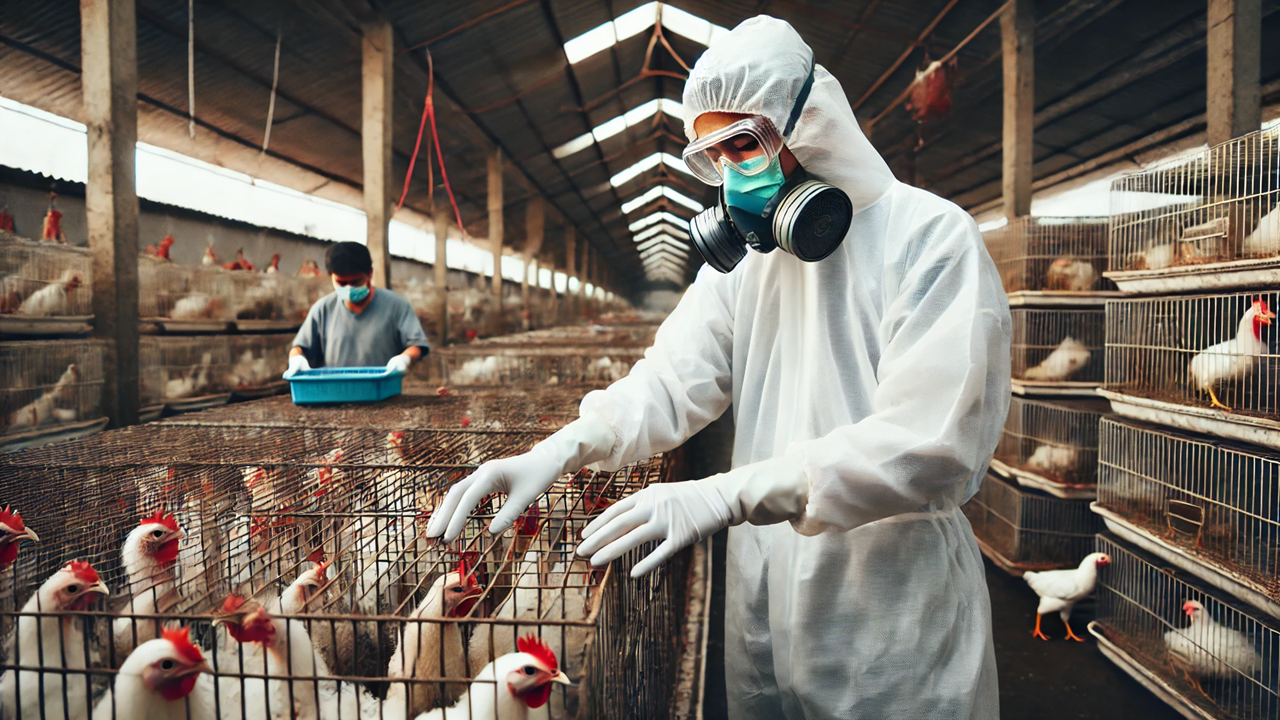Safeguarding Against Avian Influenza: Practical Guidance for High-Risk Individuals
The World Health Organization’s (WHO) "Practical interim guidance to reduce the risk of infection in people exposed to avian influenza viruses" outlines measures to minimize the risk of avian influenza transmission to humans. With exposure risks heightened for those working in close contact with infected animals, the guidance emphasizes the importance of personal protective equipment (PPE), good hygiene practices, and enhanced surveillance. It also encourages swift clinical response for exposed individuals and ongoing investigations to prevent further spread.

Understanding the Threat of Avian Influenza
As avian influenza viruses continue to circulate among animal populations, particularly in poultry and wild birds, the risk of transmission to humans remains a concern. Infected individuals may experience symptoms ranging from mild respiratory issues to more severe conditions like encephalitis, gastrointestinal problems, and even death. The World Health Organization (WHO) has responded by issuing updated guidelines aimed at mitigating these risks, especially for those most vulnerable, such as farmers, veterinarians, and people working in live poultry markets or animal processing facilities.
According to the WHO, the overall risk posed to the general public by avian influenza viruses is relatively low. However, the situation changes for individuals who are in direct contact with infected animals or their environments. These high-risk groups face a low-to-moderate risk of contracting the virus, making it imperative to adopt preventive strategies that minimize exposure.
Who is Most at Risk?
Certain activities heighten the risk of exposure to avian influenza. These include handling live poultry, processing animal products, and engaging in outdoor activities that involve interaction with wild birds or mammals. Among the most vulnerable are those who,
Keep live poultry in their homes or backyards.
Work in the poultry or livestock industries.
Handle raw poultry or animal by-products.
Hunt or engage in wildlife conservation activities.
Work in zoos or fur farms.
These individuals are more likely to encounter infected animals or environments, putting them at an increased risk of infection. To mitigate this, the WHO stresses the importance of wearing appropriate personal protective equipment (PPE) and following strict hygiene protocols.
Protecting Yourself: Key Measures
Minimizing exposure is crucial for anyone at risk. The WHO advises the public to avoid contact with animals that appear sick or have died unexpectedly. Those handling animal products must practice good food safety and personal hygiene, ensuring that meat, eggs, and other animal products are cooked properly before consumption. In addition, individuals should report any sudden illness in animals to authorities to help prevent further transmission.
For workers in high-risk environments, personal protective equipment (PPE) is essential. Depending on the nature of their work, they should be equipped with items such as fluid-resistant coveralls, particulate respirators, gloves, boots, and eye protection. Proper use of PPE, combined with thorough hand hygiene and regular disinfection of workspaces, can significantly reduce the risk of infection.
In addition to these preventive measures, individuals who believe they have been exposed to avian influenza are urged to seek medical attention if they feel unwell. Early diagnosis and prompt treatment are critical in managing potential infections and preventing further spread.
Monitoring and Surveillance
To prevent wider outbreaks, national health authorities are encouraged to implement enhanced surveillance measures. This includes the active and passive screening of people in high-risk occupations, contact tracing, and routine surveillance for symptoms associated with avian influenza. Local healthcare providers and public health bodies should work together to identify potential cases early, allowing for timely intervention.
WHO also recommends conducting epidemiological and virological investigations to assess the extent of infection. These investigations can help identify asymptomatic cases and determine how far the virus may have spread. By doing so, health authorities can develop more targeted strategies for containing the virus and protecting at-risk populations.
Global Response and Clinical Management
Efforts to manage avian influenza are ongoing. WHO, in collaboration with animal health organizations and national authorities, is actively assessing outbreaks and guiding to reduce human exposure. While antiviral medications such as oseltamivir are recommended for individuals suspected of contracting the virus, WHO currently advises against using corticosteroids and certain antibiotics due to insufficient evidence of their effectiveness.
The guidance also highlights the importance of collaboration between public health and animal health authorities. By working together, these bodies can ensure that infected animals and humans are treated promptly and effectively, reducing the risk of widespread infection.
As avian influenza evolves, WHO's practical interim guidance will be updated to reflect the latest information and best practices for managing this ongoing threat. Following these recommendations is key to staying safe for those working in environments where exposure is likely.
- FIRST PUBLISHED IN:
- Devdiscourse
ALSO READ
Avian Influenza Outbreak Expands: New Cases in Sharon Region
Avian Influenza Strikes Big Cats: Nagpur Zoo Alerted
Portugal Hit by Avian Influenza Outbreak Amid Rising European Cases
Avian Influenza Sparks Precautionary Measures at Nagpur Zoos
Avian Influenza Hits Maharashtra Wildlife: A Cautionary Tale










